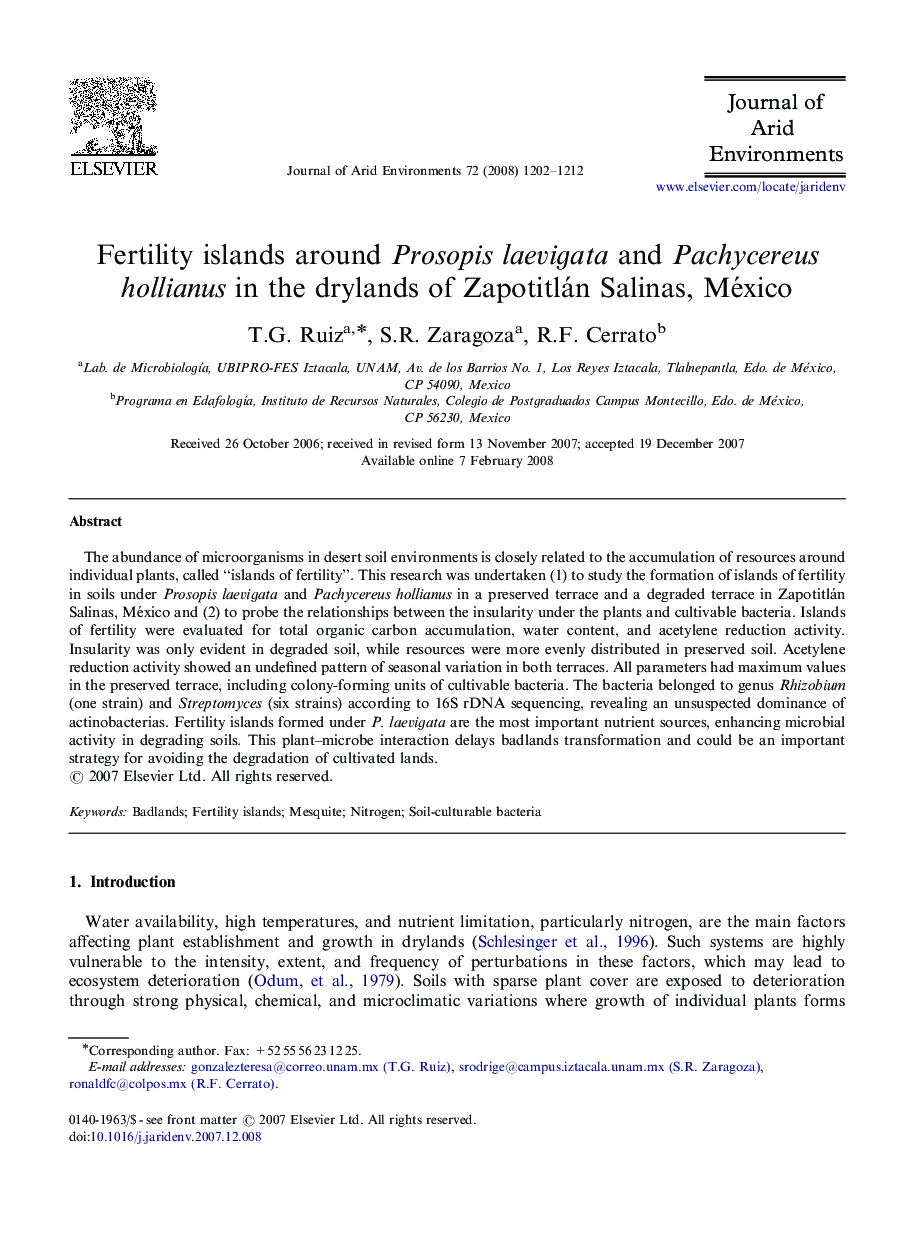| Article ID | Journal | Published Year | Pages | File Type |
|---|---|---|---|---|
| 4393924 | Journal of Arid Environments | 2008 | 11 Pages |
The abundance of microorganisms in desert soil environments is closely related to the accumulation of resources around individual plants, called “islands of fertility”. This research was undertaken (1) to study the formation of islands of fertility in soils under Prosopis laevigata and Pachycereus hollianus in a preserved terrace and a degraded terrace in Zapotitlán Salinas, México and (2) to probe the relationships between the insularity under the plants and cultivable bacteria. Islands of fertility were evaluated for total organic carbon accumulation, water content, and acetylene reduction activity. Insularity was only evident in degraded soil, while resources were more evenly distributed in preserved soil. Acetylene reduction activity showed an undefined pattern of seasonal variation in both terraces. All parameters had maximum values in the preserved terrace, including colony-forming units of cultivable bacteria. The bacteria belonged to genus Rhizobium (one strain) and Streptomyces (six strains) according to 16S rDNA sequencing, revealing an unsuspected dominance of actinobacterias. Fertility islands formed under P. laevigata are the most important nutrient sources, enhancing microbial activity in degrading soils. This plant–microbe interaction delays badlands transformation and could be an important strategy for avoiding the degradation of cultivated lands.
